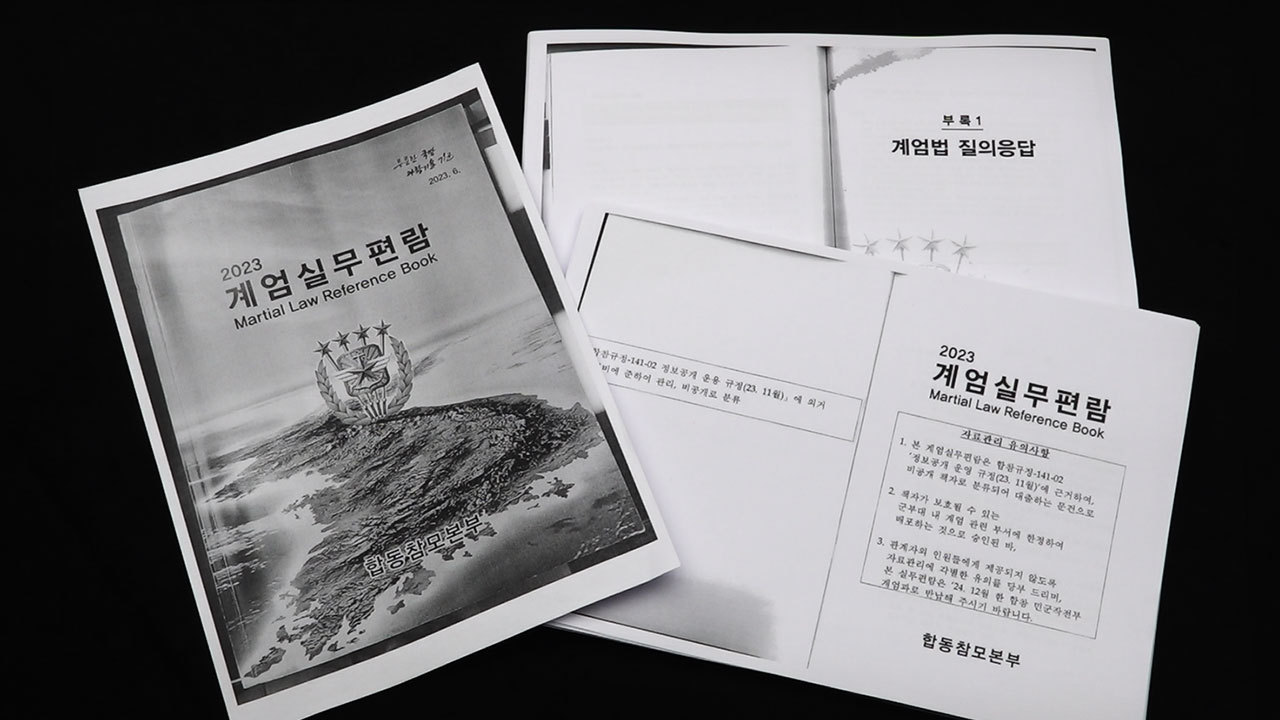
S. Korean Martial Law, A Gag Order to its People and the Press
2024년 12월 20일 13시 02분
With the Pyeongchang Winter Olympics nearing its end, it should be clear to most Koreans that the attempt by Japanese Prime Minister Shinzo Abe and US Vice President Mike Pence to counter what they called North Korea’s “charm offensive” with President Moon Jae-in failed miserably.
Because of the unprecedented outreach by the Kim Jong Un government, Pyongyang and Seoul are now closer than ever to further talks and possibly reaching agreement on a “third summit.” These developments could further alleviate tensions and hopefully create a climate for US talks with the North over its nuclear program.
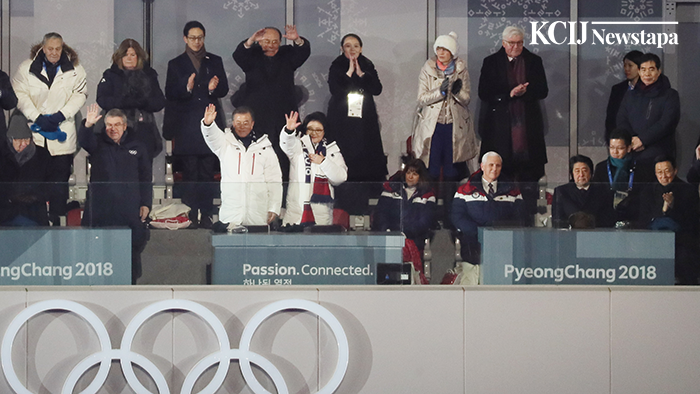
In this context, it’s important to remember that not all Japanese politicians support the US “maximum pressure” strategy that Abe strongly backs. That was clear in a recent Newstapa interview with Yukio Hatoyama, a progressive politician who was Japan’s prime minister from 2009 to 2010. He criticized Abe’s adoption of President Trump’s hard line on North Korea as well as Abe’s support for a three-way military alliance between Tokyo, Seoul and Washington.
Hatoyama also responded to recent reports that Japanese Maritime Self Defense Forces are cooperating with the US military in monitoring North Korea. And he commented on documents I recently unearthed about Japan’s role in watching the Korean coast during the Gwangju Uprising of 1980.
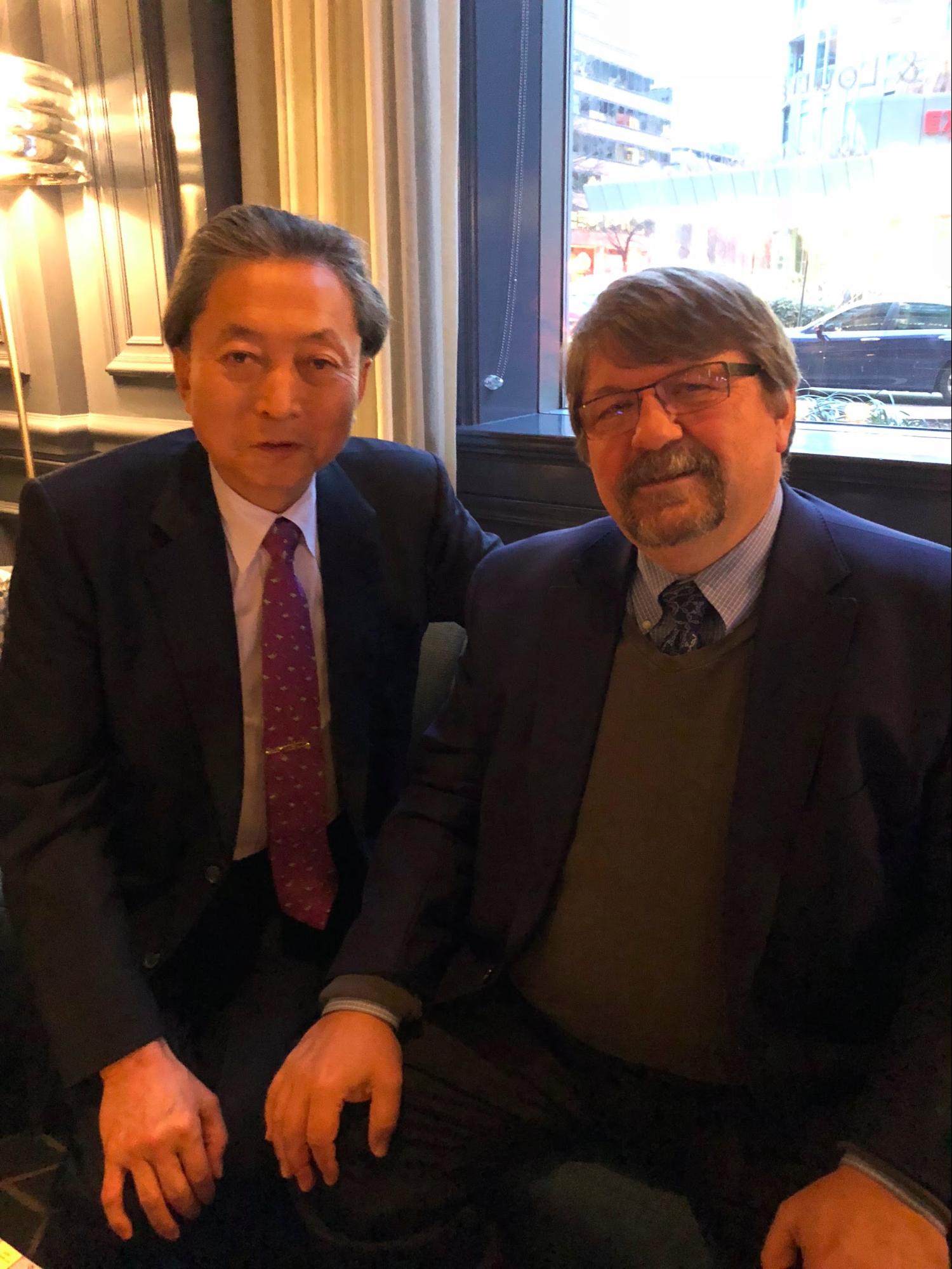
“North Koreans in the end are the same people as South Koreans,” Hatoyama said in our interview, which took place at the Ritz-Carlton Hotel in downtown Washington, DC. “To them, Japanese are something different. They feel they were attacked by us in the past, and for that reason they don’t have high hopes for a military alliance” with Japan, either in the past or today.
On the issue of President Trump’s and Shinzo Abe’s “maximum pressure” campaign against North Korea, which is based on tough sanctions combined with threats of military action, Hatoyama has a fundamental disagreement. “Japan’s role should be to create the conditions for North Korea to come to the negotiating table” and not to increase the pressure on Pyongyang, he said.
In Hatoyama’s view, Japan should work with South Korea and China to convince the United States and North Korean to begin talks towards a peace treaty. That could be done, he said, through a proposal endorsed by China under which the North would halt its nuclear weapons development in return for a postponement of the massive US-South Korean military exercises now scheduled for late March.
“Once a peace treaty is signed, there’s no need to use nuclear weapons because there’s no threat,” he said. “I think the freeze would be enough for North Korea to start negotiating.” The interview with Hatoyama, who was in Washington to discuss the sensitive issue of US bases in Okinawa with American politicians, took place on February 6.
His critique of Abe was timely, because that same week, President Moon had a confrontation with Abe about his stand on North Korea. On February 10, Abe asked Moon to quickly resume the US-South Korean military exercises that North Korea sees as deeply provocative and is one of the reasons for their nuclear weapons program.
Moon, whose government is considering a temporary halt to the drills after the Olympics as a way to maintain diplomatic momentum, coldly dismissed the suggestion, saying “this issue is about our sovereignty and [Japan’s] intervention in our domestic affairs.”
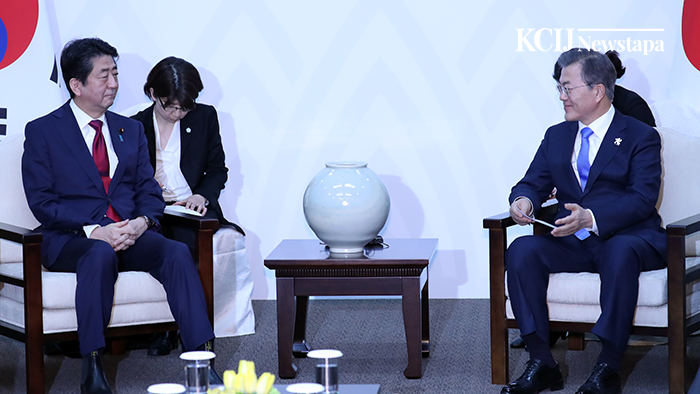
Hatoyama is a long-time fixture in Japanese politics whose grandfather was prime minister during the 1970s. His experience is relevant to South Korea because, as a progressive, he was subjected to the same kind of political pressures experienced by former President Roh Moo-hyun when he took a differing view than the US government on critical security issues. Moon Jae-in is under similar pressures today in relation to his engagement policies with North Korea.
The pressure on Hatayoma began in August 2009, when his progressive Democratic Party of Japan (DPJ) shocked the United States by defeating Abe’s ruling Liberal Democratic Party (LDP) in parliamentary elections.
The DPJ was a coalition of former Socialists and LDP politicians formed as an alternative to the LDP’s corruption and slavish devotion to American foreign policy. Hatoyama had campaigned on a platform to redefine Japan’s Cold War relationship with Washington by negotiating a withdrawal of U.S. Marines from Okinawa, as widely demanded by the Japanese people.
The party had also promised to investigate and make public secret agreements made between the U.S. government and the LDP, particularly those that allowed U.S. nuclear armed ships unfettered access to Japanese ports. Overseas, the DPJ had publicly announced plans to terminate the Japanese role in refueling U.S. ships enroute to war zones in Iraq and Afghanistan.
But these policies were anathema to the US officials who were then running foreign policy for President Obama. Almost immediately, the new administration began a concerted campaign to pressure Hatoyama and the DPJ to reverse their policies. The effort was almost a carbon copy of how the US had pressured Noh Moo-hyun during his administration.
I chronicled both campaigns in a chapter on East Asia in The Wikileaks Files: The World According to US Empire, a 2016 book based on US diplomatic cables obtained by Wikileaks. The first part of the chapter documents the US pressures on President Noh and the promises by the incoming Lee Myung Bak administration to “normalize” South Korean relations with the U.S.
One Wikileaks cable, for example, quotes a senior adviser to Lee assuring American officials that “the Lee administration would handle U.S.-ROK relations much better than President Roh or former President Kim Dae-jung, and the ROK ‘would be an entirely different country.’” The adviser, identified in the cable as Kim Woo-sang, former Director of Yonsei University's Institute of East & West Studies, also stated that “President Roh Moo-hyun's version of engagement policy was ‘simple appeasement.’"
The US government viewed Prime Minister Hatoyama in much the same way. The Wikileaks cables show that its offensive to prevent Japan from altering its relationship to the United States was led by Kurt Campbell, the assistant secretary of state for East Asia and the Pacific, and Michelle Flourney, the undersecretary of defense for policy, and began in June 2009, three months before Hatoyama was elected prime minister in September 2009.
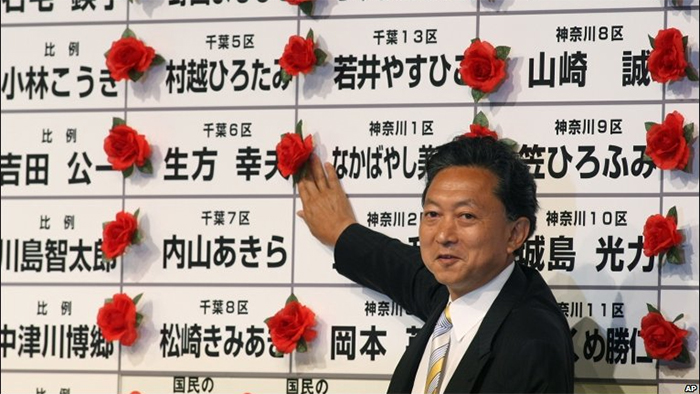
At the time, Hatoyama’s DPJ wanted to undo a massive alignment of US bases in Japan that had been agreed to several years earlier by the ruling LDP in a pact to “transform” Japan’s military into a more supportive adjunct to the Pentagon in US military operations abroad. “Of course, these initiatives didn’t settle well with the US,” Hatoyama told Newstapa.
That response is spelled out in the Wikileaks cables. “A defeat of LDP,” a top Pentagon official wrote in a memo to Fluorney, “will introduce an element of uncertainty into our Alliance relations with Japan.” He instructed her to meet with DPJ leaders “to reinforce [the] importance of implementing the transformation and realignment agenda.”
During this time, Campbell made many visits to Tokyo, primarily to persuade Hatoyama’s government not to reverse the agreement with the LDP to reduce the US Marine presence at its primary US base in Futenma by allowing the US to build a new facility at Henoko, which is further north. Okinawans had demanded that Futenma be closed after years of violent crimes and rapes by US soldiers and accidents by US aircraft.
The pressure worked. By 2010, Japan’s government agreed not to change the Okinawa bases agreement and Hatoyama was ousted as DPJ chief. In an extraordinary admission, the former prime minister essentially blamed Japan’s powerful bureaucrats for spiking his attempts to redefine the US-Japanese alliance.
“In reality, LDP administrations were really moved by bureaucrats, who were the real operators,” he said. “They were always trying to please the U.S., trying to guess what they wanted and acting proactively on that.”
Abe was re-elected prime minister in 2012, and has been running Japan ever since. Under his leadership, Japan has lifted some of its restraints on overseas military action and started working very closely with US military forces in monitoring North Korea.
Since 2016, for example, Japan’s Maritime Self Defense Forces have been patrolling international waters near the Korean Peninsula “ to thwart attempts by North Korea to evade international sanctions,” Asahi reported in January. The MSDF information about North Korea is shared with the US military, Asahi revealed. “In the Sea of Japan, the SDF and the US military patrol together, each in an assigned area.”
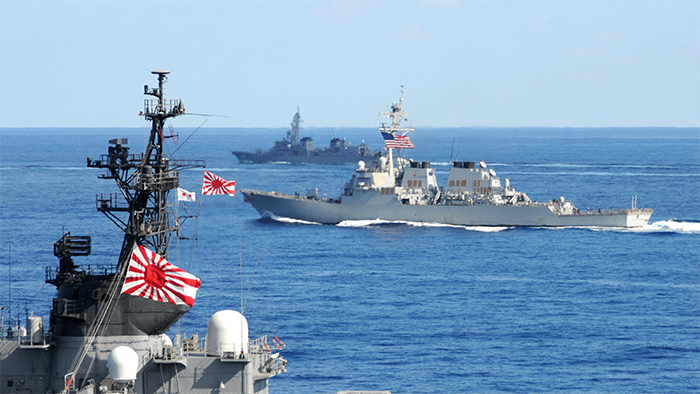
But US-Japan military cooperation around the Korean Peninsula is nothing new. Last year, as I was organizing my collection of declassified US documents on the Gwangju Uprising, I discovered a CIA cable from May 1980 that describes how the Japanese Maritime SDF was monitoring the Korean coastline on behalf of the South Korean military, apparently to ensure against the possibility of North Korean infiltration into the south during the uprising.
The cable, which I obtained from the US “Joint Intelligence Center Pacific,” is apparently written by an American intelligence officer and dated May 23, 1980. It notes that in South Korea, “there is currently no threat of conventional invasion of South Korea by North Korea forces.” Of “great concern,” however, “is the high probability that [North Korean] unconventional forces are right now infiltrating into the south by sea” as Chun Doo Hwan’s military moves to end the uprising.
To guard against this, the cable stated, “The Japan Maritime Self Defense Force (MSDF) was closely watching the situation in Southwest Korea.” If any infiltration occurs, it adds, “the infiltrating will probably come by sea rather than across the heavily patrolled DMZ.” The US document also states that Japan’s Maritime Safety Agency – its equivalent to the civilian coast guard – had “promised to consider increasing surveillance efforts in the future.” Moreover, beginning on May 23, “the MSDF will increase the number of surveillance flights over the Sea of Japan.”
These documents are earliest evidence I’ve ever seen of Japan playing any kind of military role on the Korean Peninsula after its surrender to US and Soviet forces in the aftermath of World War II. I asked Hatoyama about these reports.
“I think for the Korean people, for Japan’s MSDF to come into their territory or fly over them is problematic,” he said. “They feel more rejection against Japan’s MSDF than against North Korea.” Abe’s eagerness to cooperate with the US military in Korea, he argued, is part of his dream to transform Japan into a military power. “He has sort of a ridiculous ambition to say that ‘I made a strong country,’” he said. The same is true of Abe’s drive to convince Japan to get rid of Article 9 of its constitution, which bans Japan from taking part in military operations outside of its shores.
“Of course, he wants to make the country strong because nobody has done that before,” he said. “However, my definition of a strong politician is not some who can create a military power; it’s someone who can create an environment where you can work cooperatively, together with neighboring countries.” As for Abe’s attempt to change the constitution, he concluded: “that will be difficult.”
뉴스타파는 권력과 자본의 간섭을 받지 않고 진실만을 보도하기 위해, 광고나 협찬 없이 오직 후원회원들의 회비로만 제작됩니다. 월 1만원 후원으로 더 나은 세상을 만들어주세요.